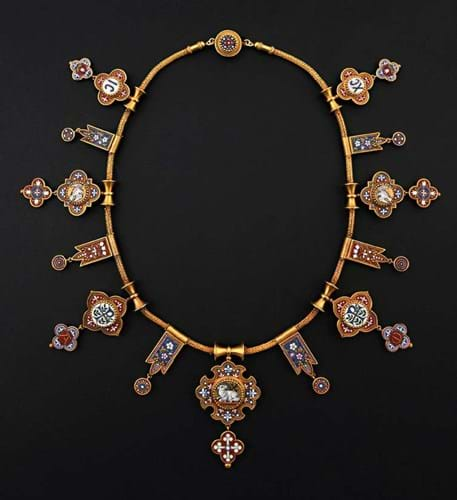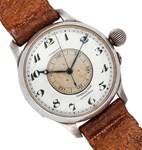But, at their best, they are no less spectacular. The firm – like Castellani, mentioned in many Victorian ‘Grand Tour’ handbooks of the Eternal City – was based from 1830 at the Strada del Corso and from 1857 at the Piazza di Spagna. Antonio (1798-1870) was the goldsmith, Carlo a shell engraver and Giuseppe a gem engraver and retailer.
Civilotti gold and micromosaic jewels are particularly fine and it seems likely that the firm was supplied by mosaicist Luigi Podio (1826-88) who also worked for Castellani.
The necklace offered by Lawrences (25% buyer’s premium) of Crewkerne on January 20 was out of the top drawer.
The Museum of Fine Arts in Boston has a similar piece dated to c.1870 incorporating a central portrait of Julius Caesar and other mosaics symbolising Rome’s imperial past.
The Crewkerne example was hung with pendants decorated with the Lamb of God, the Dove, the Chi-Ro and other motifs from the early Christian church. It came for sale in its original fitted case with red velvet interior and label reading G. Civilotti, Piazza di Spagna, Rome.
Against a guide of £6000-8000, it made £20,000.
Only a handful of similar Byzantine-style gold and micromosaic pieces by Antonio Civilotti have appeared for sale in recent years, including a Lamb of God cross pendant (£2400 at Bonhams Knightsbridge in 2010) and a similar pendant and earrings set (€6500 at Christie’s Paris in December 2018).















